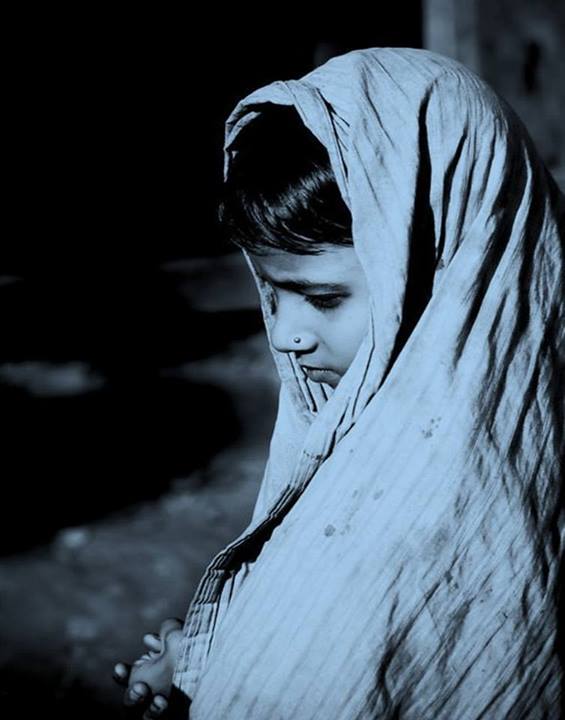The shock of child marriage on the lives of girls and boys can be ruinous. It may start a series of children’s health complications, with child mortality, domestic violence, severe poverty cycles and much more. The Bangladesh practice of child marriage continues in a silent attack on health and human rights. It is a form of violence. It closes the eyes of people to abuses in child protection. According to the Unicef Annual Report 2011 child marriage steals whole childhoods and produces disorders over entire lifetimes.
By Shidratul Moontaha Suha
“No marriages shall be legally entered into without the full and free consent of both parties, such consent to be expressed by them in person and in the presence of the authority competent to solemnize the marriage.” (Article 1, Convention on Consent to Marriage, Minimum Age for Marriage and Registration of Marriages, 1962) *
The UN Convention on Consent to Marriage, minimum age for marriage and registration of marriages requires signatory states to obtain consent from both parties entering into a marriage and to establish a legal minimum age for marriage. Bangladesh signed the convention on 5 October, 1998.
Despite the legislation and being signatory to these conventions, the United Nations Population Fund (UNFPA) Bangladesh has it that early age marriage is 48%. Again, it has been estimated in 2011 that the overall male:female sex ratio is 1.03 who are under 15 years – almost children, as acknowledged by BDP, 2013.
Also, on 15th November, 2013 a blog post by Girls not Brides stated that 66% of girls are married by the time they turn 18 in Bangladesh; and 32% marry before 15 years of age. The statistics shows an alarming status in regard to child marriage in Bangladesh.
Studies revealed that harmful traditional norms, starvation, homelessness, un-wanted pre-marriage pregnancies, fear of humiliation, dowry and bride price, gender discrimination, unpaid labour, lack of strong legislative framework and social pressures are the leading causes for marring off a child at an early age in the context of Bangladesh.
Given this situation, numerous initiatives have been taken by several organizations in the last decades. However, the Government of Bangladesh, along with some local and international NGOs have made major efforts to decrease child marriage at the fastest rate possible.
The initiatives to bring about a declining child marriage rate includes awareness programmes, proactive legislative enforcement, social support, encouraging girls’ education, bettering life-skills and community-wide mobilization. In a report published by Plan International it says important roles can be played by more participation by the community and leaders in child marriage prevention, the state itself and by whatever means the children themselves.
The population of Bangladesh is projected to rise to 202 million by 2050 from 157 million in 2013. On 31st October, 2013 daily newspaper, Prothom Alo reported that stopping child marriage could be the first concern for stabilizing population growth.
A national survey was commissioned by Plan Bangladesh from July to August 2012. One of the findings from the survey states in the recently published ‘Child Marriage in Bangladesh: Findings from a National Survey’ that of the girls married before 18, 86% have no education.
While, Plan Bangladesh has some success in relation to preventing early marriage of children and the putting off of early marriages of girls in Bangladesh, the study also reveals, in ‘Asia Child Marriage Initiative: Summary of Research in Bangladesh, India and Nepal’, that only a very slight increase in the average girl’s age for marriage was achieved. The rate was 16 years in 2004 and it becomes 16.4 years in 2007 which indicates low progress in terms of reducing the rate of child marriage.
“The consequences are dire not only for children, but also for communities and countries. Child marriage’s causes are complex, interrelated and dependent on circumstances and context. There are multiple push-pull factors, which means child marriage is still so prevalent across the world,” Nigel Chapman, 31 May, 2013.
There are multiple push and pull factors (push factors involving a force which acts to drive child marriage and the pull factor is what draws them to a new location) allied with child marriage across the world. Child marriage, in research and practice, has always incorporated topical challenges across interfaces between the push and pull factors.
Recent research works verify that factors associated with child marriage covers numerous areas. Among those ‘eve-teasing’ which makes the parents want to marry their daughter off is one. Superstition that girls should be married off early is another major push factor. Thinking of a girl child as a burden is another key factor which pushes their parents to marry their daughter off. The highlight pull factors include the tendency to get financial incentives from a groom, a groom who wants to marry a girl child without dowry and others.
Marriage related violence is another concern. Though some NGOs have to a degree succeeded in implementing intervention in terms of reducing child marriage in targeted regions, the rate of child marriage, stands at 64% in Bangladesh (Bangladesh Demographic Profile, 2013). This result, even as a short term objective, is hardly rewarding in regards to dropping the rate of child marriage over the long run!
Finally, an advocacy level activity could be appreciated across the board for reducing child marriage. Partnerships between civil society organizations and government for implementing the Child Marriages Prohibition Act 2013 for the prevention of child marriage seems to promise to yield positive results. Recently drafted Child Marriage Restraint Act, 2013, is comparatively more comprehensive than the child marriage restraint act, 1929. So it is high time to push the government to implement the articles (particularly article 4, 5, 6, 7) in practice.
*accessed at:
http://www.ohchr.org/Documents/ProfessionalInterest/convention.pdf
The writer is a Masters in Social Science (MSS) student of University of Dhaka, Department of Development Studies.






